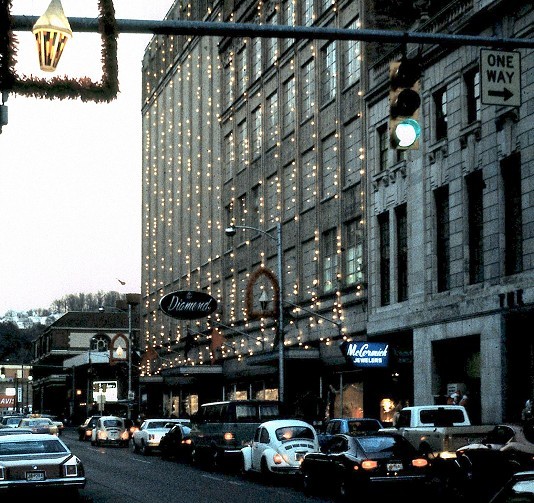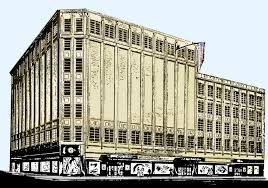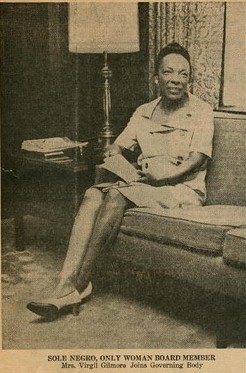Sit-Ins at the Diamond Department Store, 1958-1960
Introduction
Text-to-speech Audio
Images
This is one of only a few photos of the Diamond near the time of the sit-ins. If you are aware of any images of the protests in Charleston, please add them or contact the author of this article

The Diamond was Charleston's leading department store, boasting five floors of retail space, a beauty shop, and lunchette

Elizabeth Harden Gilmore was the secretary of the Charleston chapter of CORE and the leading organizer of the protests against the Diamond Department store

Backstory and Context
Text-to-speech Audio
On August 11, 1958, a committee of white and Black representatives of the Charleston chapter of the Congress of Racial Equality (CORE) approached the management of the Diamond Department Store. The members recognized that the manager of the store, a native of Missouri and long-time resident of Alabama, might be unfamiliar with the fact that many of the restaurants and stores in Charleston served white and Black customers and none of these establishments had lost business for doing so. The manager promised to take the matter to the board and contact CORE with his response. After he failed to respond, members of CORE again met with the manager who reported that the board voted unanimously against CORE's request to end its ban on serving Black customers at the Diamond's lunch counter. At the time, the store also denied Black customers the opportunity to try on merchandise before they purchased it. The manager defended both of these policies by claiming any modification would offend white customers. In response, the churches and other institutions in Charleston's Black community called on members to boycott the Diamond.
Elizabeth Harden Gilmore led a 22-month campaign to end racial discrimination at the Diamond Department Store. Gilmore and other Black leaders in Charleston established a local chapter of the CORE for the express purpose of challenging segregation at the leading department stores of Charleston. Some of the leading department stores agreed to integrate after meeting with members of CORE, largely due to the recognition that maintaining their policy of racial discrimination might lead to boycotts and protests that would hurt business. Within a few months, Kresge, Woolworth, and the Newberry department stores opened their lunch counters to customers of all races. The Capitol Theater also decided to integrate its facilities. However, the Stone&Thomas Department Store and the Diamond Department Store continued to draw the color line. African American patrons could purchase clothing but they could not try those items on and they could not return them after they had touched their skin. Although they could purchase meals to-go, the Diamond's lunch counter refused to seat African Americans.
After months of protests by members of CORE that brought older community members together with students at West Virginia State College, management decided to open the Diamond's lunch counter to all races on May 3, 1960. Blanche Wade recalled how the protests hurt the Diamond economically. She and other protesters would purchase items and then attempt to be seated at the Diamond's lunch counter. After being refused service, she and others would politely return the items. When this strategy failed to bring integration, she and others escalated their protest from returning items to effectively shutting down the lunch counter by holding sit-ins.
